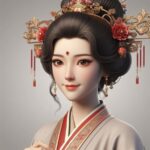Meet the Four Great Beauties of China who captivated the nation throughout history:
Xi Shi (7th/6th Century BCE)
According to SCMP, Xi Shi, a legend of breathtaking beauty, hailed from the Yue state and lived during the Spring and Autumn period (770–481 BCE). She came of age during a tumultuous era in Chinese history and played a pivotal role in the downfall of a dynasty.
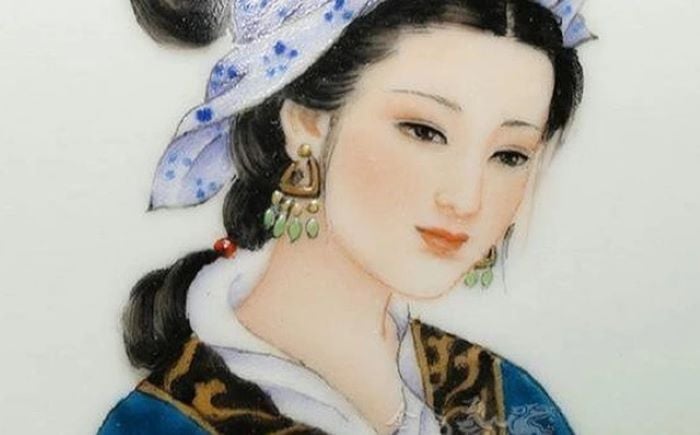
Xi Shi, renowned for her exquisite beauty, captivated both a king and a nation. (Illustration)
During this time, King Fuchai of Wu invaded the state of Yue. Yue’s king, Goujian, suffered defeat and retreated to Mount Hui (present-day Zhejiang Province). To sue for peace, he offered his beautiful wife to Fuchai as a concubine.
Subsequently, the Yue strategists devised a plan to use Xi Shi’s allure to their advantage. They trained her in singing and dancing, and she soon became the king’s favorite consort. Fuchai’s infatuation with Xi Shi led him to neglect his state duties.
Fuchai spared no expense in constructing lavish palaces for Xi Shi, draining the resources of Wu. Yue seized this opportunity to strike back, ultimately reclaiming their sovereignty.
Legend has it that Xi Shi was torn between her love for Fuchai and her loyalty to her homeland. Ultimately, she chose to end her life rather than live with the conflict.
Wang Zhaojun (1st Century BCE)
Wang Zhaojun, a noble lady of exceptional beauty and a master of the pipa (a traditional Chinese musical instrument), grew up during the Western Han Dynasty (206 BCE–9 CE).
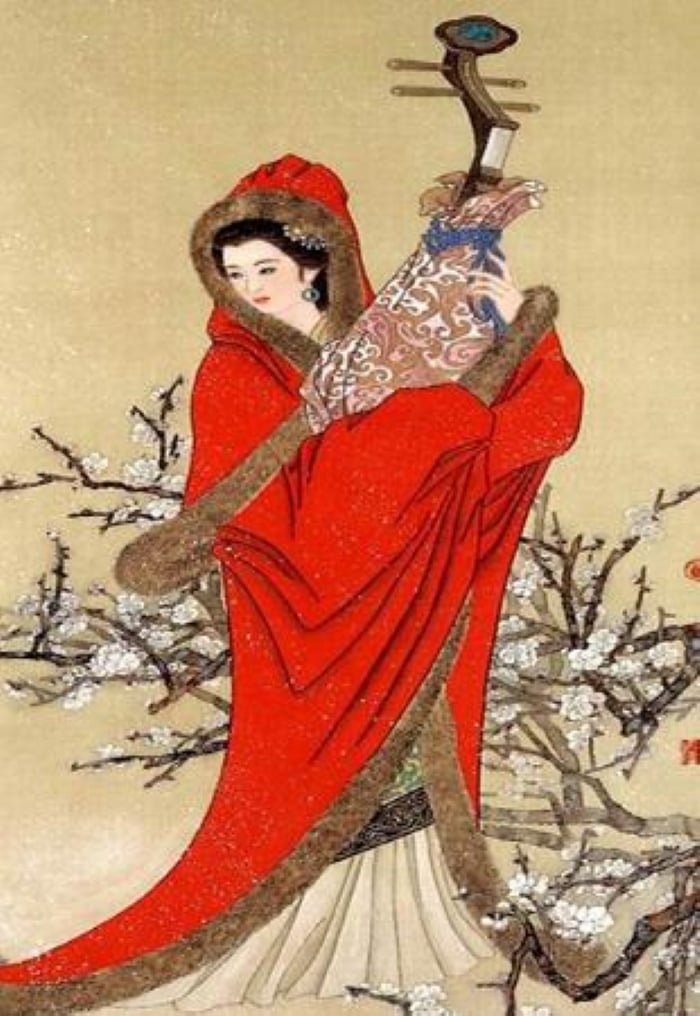
Wang Zhaojun, a woman of extraordinary beauty and a skilled musician. (Illustration)
At that time, Emperor Han Yuan selected his consorts based on paintings. Wang Zhaojun, unlike other ladies, did not bribe the artist, resulting in an unflattering portrait. Consequently, the emperor repeatedly passed her over.
Meanwhile, the dynasty was struggling to maintain peace with the nomadic tribes of the north. The leader of the Xiongnu tribe, Huhanxie, sought to forge an alliance through marriage with a Han princess.
Unwilling to part with his own daughter, Emperor Han Yuan devised a plan to select the ugliest woman from his harem as a substitute bride. Coincidentally, that woman was Wang Zhaojun.
On the wedding day, the emperor was astonished by Wang Zhaojun’s true beauty and regretted his decision. Nonetheless, she became a sacrificial lamb for the sake of national peace.
Diao Chan (2nd Century CE)
Diao Chan’s origins are shrouded in mystery, and her real name is unknown. “Diao Chan” was an alias, referring to a jade ornament and luxurious fur clothing. According to SCMP, she was a courtesan.
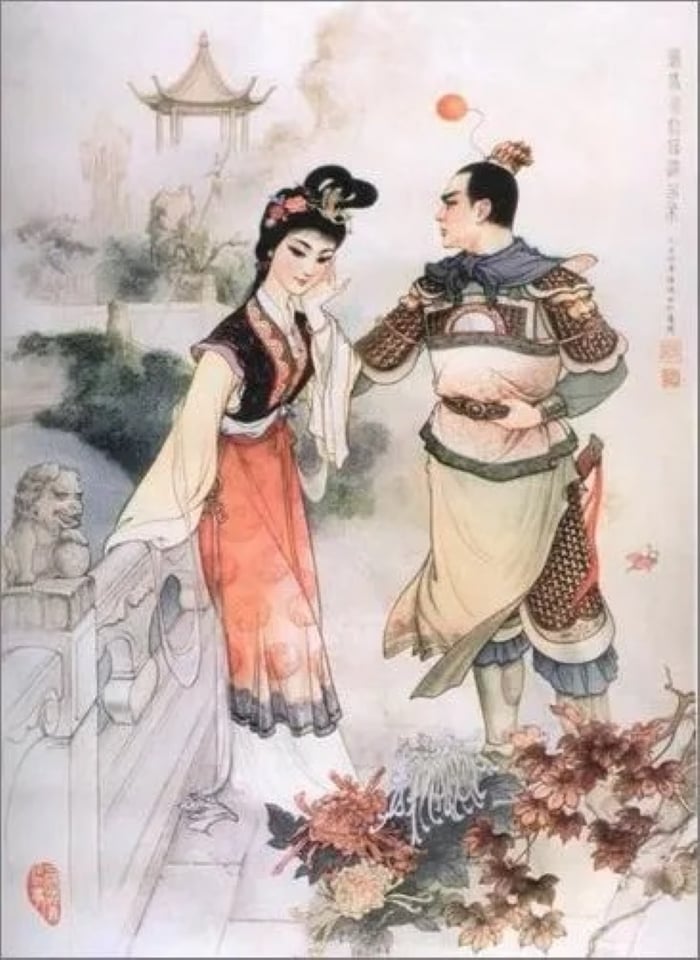
Diao Chan, the courtesan who captivated both Dong Zhuo and Lü Bu. (Illustration)
Historical records indicate that Diao Chan was a stunningly beautiful entertainer or companion to the infamous Dong Zhuo, a powerful warlord known for his brutality and ambition to become emperor during the Eastern Han Dynasty (25–220 CE). Dong Zhuo heavily relied on his talented foster son, Lü Bu.
Unfortunately, Lü Bu fell deeply in love with Diao Chan, which led to tension between him and his foster father. In 192 CE, Lü Bu assassinated Dong Zhuo, inadvertently saving the Han dynasty from the ruthless warlord’s grasp.
Yang Guifei (719–756 CE)
Yang Guifei lived during the zenith of the Tang Dynasty (618–907 CE). She was the beloved consort of Emperor Xuanzong (reigned 712–756) and wielded significant influence within the court.
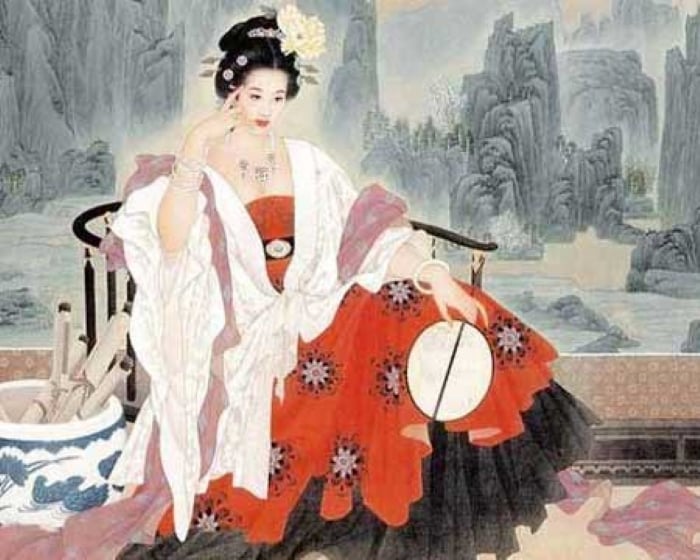
Yang Guifei, the beloved consort of Emperor Xuanzong. (Illustration)
Through Yang Guifei’s patronage, her family members rose to prominent positions within the dynasty. One such beneficiary was An Lushan, who, with Yang Guifei’s recommendation, commanded an army of 200,000 men. However, he eventually rebelled against the emperor.
An Lushan’s forces seized the capital, Chang’an, forcing the emperor to flee. Blaming Yang Guifei for the emperor’s neglect of state affairs, the imperial guards vowed not to protect the Tang Dynasty as long as she lived. Consequently, the emperor reluctantly ordered her execution, along with that of her cousin.
Later, when the emperor’s son regained control and restored the dynasty, he brought his father back to the palace. Legend has it that Xuanzong commissioned a painting of Yang Guifei, which he hung in a small chamber, often visiting it to reminisce about his beloved.
The Tragic Tale of the Four Ancient Chinese Beauties: Unveiling the Lesser-Known Stories of Their Untimely Demises
The legendary beauties of ancient times, Xi Shi, Yang Guifei, Wang Zhaojun, and Diaochan, have left an indelible mark in history. Their names have become synonymous with unparalleled beauty, but their stories reveal a different picture. These women endured tumultuous lives, and their deaths were shrouded in tragedy, casting a dark shadow over their ethereal beauty.

























